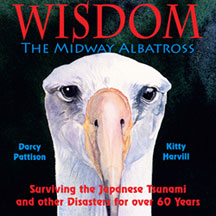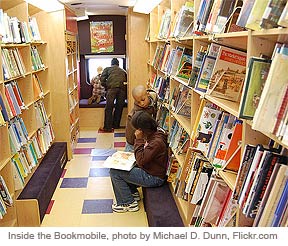
hen authors set out to do publicity, they often focus on the book and the content of their story. That means they miss a great opportunity to capture an audience’s attention: authors should tell their own personal stories—whether it is an interview, speaking engagement, online forum, or mingling at a book signing. Oh, you think, no one is interested in you and your story? You’re wrong: there are six types of personal stories, which are guaranteed to draw interest. And this is easy stuff: as a writer, you already know how to tell stories.
In her book, Whoever Tells the Best Story Wins, Annette Simmons says there are six types of stories that people want to hear from you. Here’s how to figure out what story to tell and some tips on telling your story. I’ll give short examples, but it’s best if you write your own stories like real scenes, focusing on sensory details, as you would in any good fiction. By focusing on you and your stories, your publicity will be more effective.
“Who Am I?” Stories
Why should I trust you as an author? Why should I spend hours of my life reading what you wrote? “Who Am I?” stories answer that question. We are willing to spend time with someone who is trustworthy, passionate, responsible, creative, compassionate, honest, diplomatic, insightful, entertaining, humorous, and so on. Give me a reason to trust you by telling me a true story about that character quality in your life.
Think about your character qualities, and think of a personal anecdote that demonstrates a time when you did this well, when you failed miserably, or when someone helped you understand this quality even better. Write that story.
Example: As a writing teacher, I am able to see the big picture of a story, but I was frustrated that I couldn’t teach others to see that big picture. At the time, I was broke. When a friend asked me to critique her manuscript, I had little money to spend on paper and ink, so I single-spaced the manuscript, then reduced the font to the smallest that I could see. Sometimes, a single chapter fit on one page. Suddenly, I could SEE the big picture. Now I use the Shrunken Manuscript technique, and I can teach others to see the big picture, too. I only came up with this technique because I was broke, but committed to critiquing for my friend.
“The audience for our publicity has a built-in bias against us. The problem is that everyone knows what’s in it for you: you want to sell books.”
“Why Am I Here?” Stories
The audience for our publicity has a built-in bias against us. The problem is that everyone knows what’s in it for you: you want to sell books. They seldom attribute any altruistic feelings toward you or your message. This is a huge handicap to overcome. You can do that by assuring readers they aren’t being conned or used; you really are offering a great story or great information. Why did you write this story? On some visceral level, there’s something important about this topic or this information that made you spend the extra time researching, writing, rewriting, and marketing it: what is that something?
Example: I’ve never been to Midway Atoll, the island in the middle of the Pacific Ocean, where a famous navy battle occurred. But this year, I have been glued to the news from Midway. Nesting on the island is a Laysan Albatross, who at the age of sixty-one-plus, is about to hatch her latest chick. Dubbed Wisdom, this seabird made the news last year when she and her chick survived the Japanese tsunami when it hit Midway Atoll. The story of Wisdom struck a chord—survival.  The fact that a wild bird has survived for six decades of wind and weather, pollution and predators, stirs my heart.
In fact, it was the beginning of a passion to find out more about her life and times and has resulted in a children’s picture book, Wisdom, the Midway Albatross: Surviving the Japanese Tsunami and Other Disasters for Over 60 Years. Part of the fun of writing this story was filling out the timeline of her life with the names of hurricanes, other earthquakes and tsunamis, and the dangers of longline fishing and plastic pollution. For me, it’s not just another bird story: it’s a story of survival.
The fact that a wild bird has survived for six decades of wind and weather, pollution and predators, stirs my heart.
In fact, it was the beginning of a passion to find out more about her life and times and has resulted in a children’s picture book, Wisdom, the Midway Albatross: Surviving the Japanese Tsunami and Other Disasters for Over 60 Years. Part of the fun of writing this story was filling out the timeline of her life with the names of hurricanes, other earthquakes and tsunamis, and the dangers of longline fishing and plastic pollution. For me, it’s not just another bird story: it’s a story of survival.
I remember my father’s voice: “We had no food, so we ate rats and snakes, whatever we could catch.”
For three years, he was a Japanese prisoner of war. Somehow, he survived those awful years, coming home with beri-beri, scurvy, and such bad gums that he had to have all his teeth pulled: he wore dentures the rest of his life. He lived and fought in the Pacific, probably passing through Midway at some point.
Stories of survival draw me in, with memories of my dad, who fought, who survived, to come home, marry, and have seven children, including me. I am only here today because he survived. When I see Wisdom and her chicks, I think of my dad and his seven chicks.
“Teaching” Stories
Teaching stories are more difficult for authors to find because they go against our basic training of “Show; don’t tell.” Is there something you want to teach? My albatross story teaches that albatrosses have a hard time surviving in the wild, and the actions of mankind are a large part of that. But I just took a whole picture book to “teach” tell that story; why would I undermine it by preaching it?
But teaching stories can still be used by authors to promote. Think instead about what it means to be an author. What would you like your audience to understand about fiction, about books, or about authors?
Here are some ideas: Stories shouldn’t be taken too literally. An author’s process may vary wildly from story to story. Rejection teaches you more about craft than acceptance. How to read slowly and enjoy every single word. How to enjoy many different genres. Every student should have access to a good library.
In other words, there are many stories you can tell about what it’s like to be an author or a reader. Where do your passions lie on this topic? Choose one idea, find a personal story that demonstrates that idea, and tell it.
Example: Bookmobile—it is a  magical word for me. When I was a little girl, we lived in a remote mountainous area of New Mexico. My mother was passionate about teaching us to read and putting us in front of good literature. The state library regularly sent us books in the mail. But one year, my mother arranged for the bookmobile to stop at my house. Literally. It stopped in front of our house on the dirt road, and people came from miles away to this scheduled stop. I remember one time, I asked them to bring me a certain book. The next time the bookmobile came, I climbed the steps into the cramped shelves of books; and there it was, waiting for me. I was thrilled. Books mean a lot to kids; every kid deserves the right book at the right time.
magical word for me. When I was a little girl, we lived in a remote mountainous area of New Mexico. My mother was passionate about teaching us to read and putting us in front of good literature. The state library regularly sent us books in the mail. But one year, my mother arranged for the bookmobile to stop at my house. Literally. It stopped in front of our house on the dirt road, and people came from miles away to this scheduled stop. I remember one time, I asked them to bring me a certain book. The next time the bookmobile came, I climbed the steps into the cramped shelves of books; and there it was, waiting for me. I was thrilled. Books mean a lot to kids; every kid deserves the right book at the right time.
“Look for a story that demonstrates your desired outcome, especially one that requires some sacrifice, such as extra time practicing or studying.”
“The Vision” Story
I always knew that someday I would have a book with my name on it. A specific story like that, fleshed out with some details, is a vision story. It’s an inspirational story that looks forward to a certain event, a certain day. It justifies the hard things now: learning how to do something, studying, or putting in hours of practice. Parents use vision stories when they say, “Someday when you are ___________, you’ll thank me for ___________.”
Is there a vision story (a success of the imagination) in your past that put you where you are today? Or do you have a vision for something in your future? Look for a story that demonstrates your desired outcome, especially one that requires some sacrifice, such as extra time practicing or studying. Try to motivate your audience, while also suggesting practical strategies.
Example: When I look at the success of WOW! Women on Writing, I start to understand that an e-zine can reach out to women writers in a unique way. I want my personal blog to do that. I recently saw that WOW! is now ranked under 100,000 on Alexa; that might be Greek to you, but it means that WOW! is a highly-trafficked site. I’m writing for the WOW! e-zine and The Muffin now, so I can learn what they do well, as they seek to serve the writing community of women. For me, joining in something successful is a good move.
“People like to read about how you overcame adversity.”
“Values-in-Action” Stories
These are stories about doing the right thing in the midst of hard times, like this old saying: when life hands you lemons, make lemonade. Usually, you turn sour events into sweet because of your integrity, your values, your character. And people like to read about how you overcame adversity. They want to know the guiding principles for your actions and how you stuck to your guns. It might be something as simple as asking someone not to smoke in your house, or something more complicated about how you dealt with your child’s difficult teacher.
Example: My son was in trouble: he got caught taking drugs at school. He was going to be expelled—no question about that. Except, the vice-principal called. He wanted to explain that it was all a matter of how we discussed the infraction. If, for example, my son had taken the drugs at home and merely came to school high, it was different than taking the drugs on school property. Coming to school high would not get him expelled; drugs on school property would. I realized he was giving us an “out.” But I was furious. The issue was my son was taking drugs. Letting him off—letting him stay at that school—would not help him with this issue. Furthermore, the vice-principal had just told me what lie my son could tell and not be expelled. Would I let him tell that lie and stay in school? Or take the consequences?
That lie never got told. My son was in a private school the next week—and the new principal had full knowledge of why we needed a new school. No lies. No evasions.
“I Know What You Are Thinking” Stories
When you write a story, there are often unspoken objections to it. Maybe, you’re a WASP like me, and you wrote about racial tensions; the unspoken objection might be that you have no real understanding of racial prejudice. Maybe you’re a woman mechanic, and the unspoken assumption is that you know nothing of the insides of a car. The best way to deal with these situations is to address them directly and refute, explain, or just air the problem.
Example: Recently, I mentioned to friends that my website had over 480,000 visitors last year. Someone turned to my husband and said, “Wow, how did you do that?” The unspoken assumption was that my husband—a man—was the expert behind this kind of success online. He just laughed and said, “I don’t know anything about websites and how to get traffic. Ask Darcy.”
Tell Your Story

What story is appropriate for the book you’ve written and the publicity you want for that book? Don’t think that you have to stop with just one story because each of these stories could be the focus of a separate article, blog post, podcast, or some other type of publicity effort. Take the time to explore your personal stories, and then use them as you promote your book.
For more details on the six types of stories, read Annette Simmons’s book, Whoever Tells the Best Story Wins: How to Use Your Own Stories to Communicate with Power and Impact
***
DARCY PATTISON (www.darcypattison.com) is published in eight languages. Recent titles include three nature picture books: Prairie Storms, Desert Baths (August, 2012), and Wisdom, The Midway Albatross: Surviving the Japanese Tsunami and other Disasters for Over 60 Years (albatross.darcypattison.com).
-----
Enjoyed this article? Check out these related articles on WOW!:
Falling for the Storyteller: Authors Share Their Tips On Public Speaking
How to Put Muscle into a Marketing Plan
20 Answers: How to Successfully Market Your Book
Selling E-Books: 5 Authors Share Their Marketing Strategies